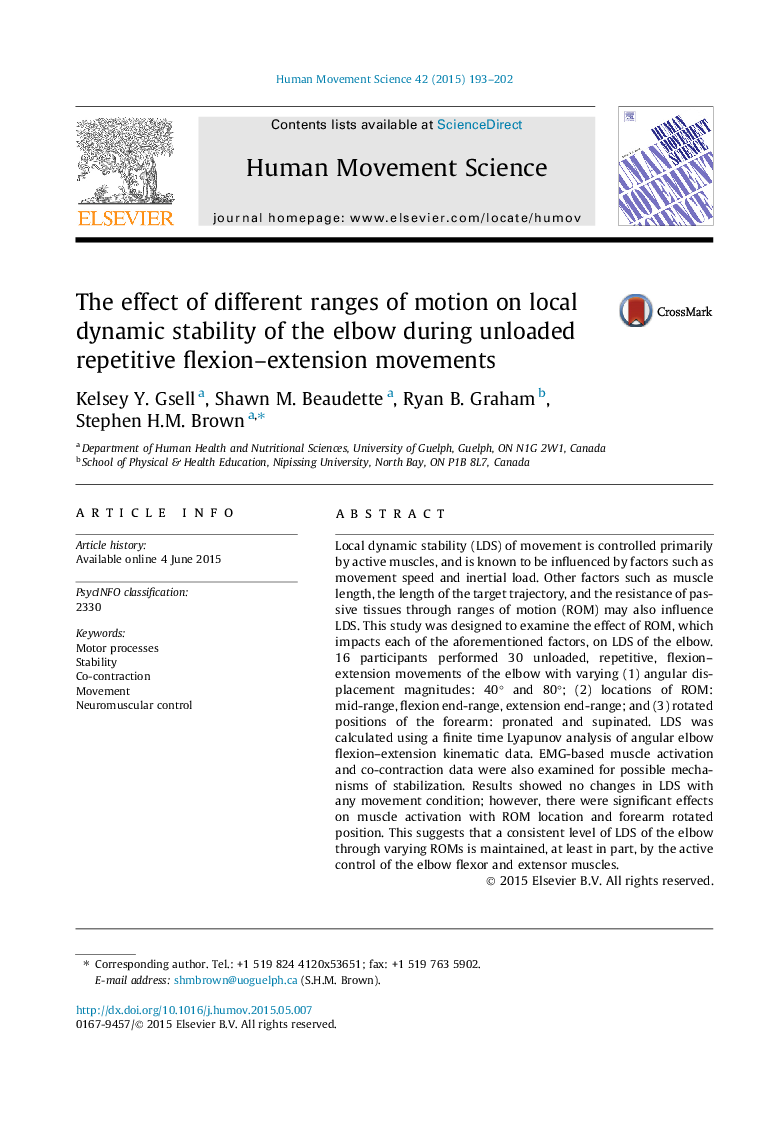| Article ID | Journal | Published Year | Pages | File Type |
|---|---|---|---|---|
| 928240 | Human Movement Science | 2015 | 10 Pages |
•Examined local dynamic stability (LDS) of elbow in various ranges of motion (ROM).•LDS was unaffected by changes in ROM magnitude, ROM location, and forearm rotation.•Muscle activation patterns were affected by ROM location and forearm rotation.•A stiffening strategy was employed during movements at flexion end-ROM.•These activation strategies may have served to maintain a consistent LDS.
Local dynamic stability (LDS) of movement is controlled primarily by active muscles, and is known to be influenced by factors such as movement speed and inertial load. Other factors such as muscle length, the length of the target trajectory, and the resistance of passive tissues through ranges of motion (ROM) may also influence LDS. This study was designed to examine the effect of ROM, which impacts each of the aforementioned factors, on LDS of the elbow. 16 participants performed 30 unloaded, repetitive, flexion–extension movements of the elbow with varying (1) angular displacement magnitudes: 40° and 80°; (2) locations of ROM: mid-range, flexion end-range, extension end-range; and (3) rotated positions of the forearm: pronated and supinated. LDS was calculated using a finite time Lyapunov analysis of angular elbow flexion–extension kinematic data. EMG-based muscle activation and co-contraction data were also examined for possible mechanisms of stabilization. Results showed no changes in LDS with any movement condition; however, there were significant effects on muscle activation with ROM location and forearm rotated position. This suggests that a consistent level of LDS of the elbow through varying ROMs is maintained, at least in part, by the active control of the elbow flexor and extensor muscles.
